Capacitors are one of the most basic electronic components in life. How much do you know about electrolytic capacitors? Do you know how electrolytic capacitors are classified? This article will reveal to you the classification method and structural characteristics of electrolytic capacitors.
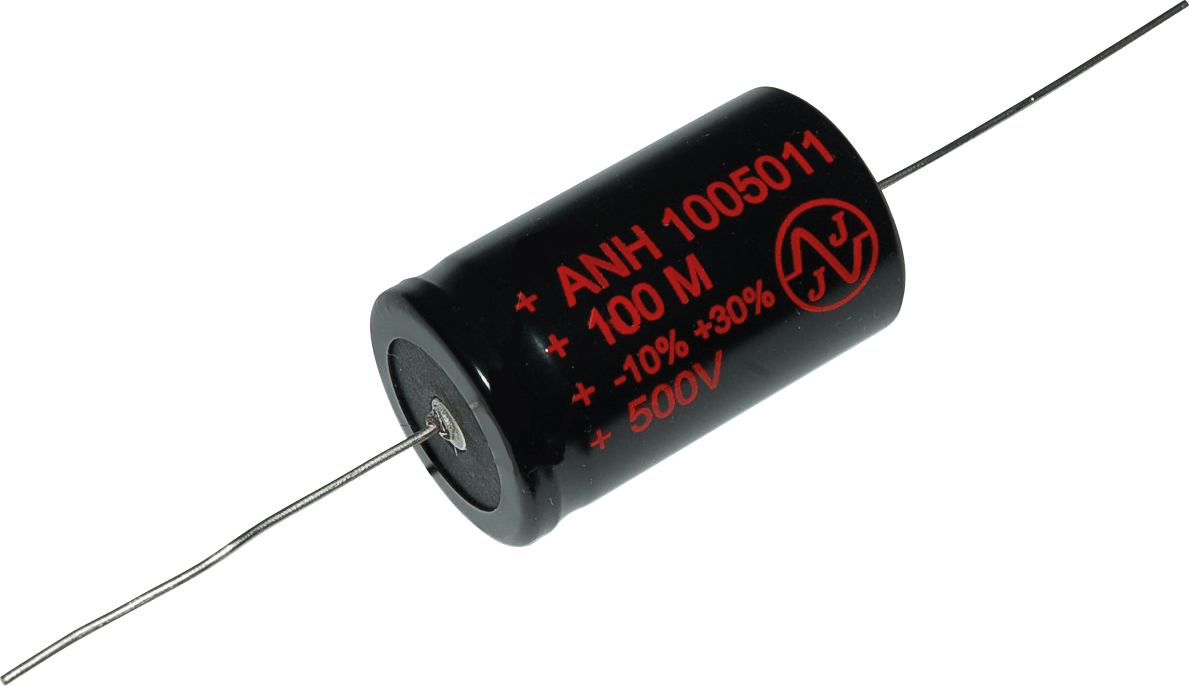
Electrolytic Capacitor
Capacitor
A capacitor is an electronic component consisting of two conductors sandwiching an insulator. As one of the three basic components, capacitors are mainly used for energy storage and filtering. In addition, they also have functions such as DC blocking, bypass, coupling, rectification, tuning, and energy conversion. Failures caused by application reasons account for about 55-85% of the total failure rate of capacitors; failures caused by the quality of capacitors themselves account for about 15-45%. Therefore, the selection and application of capacitors in electronic products is the basis for ensuring product quality and reliability.
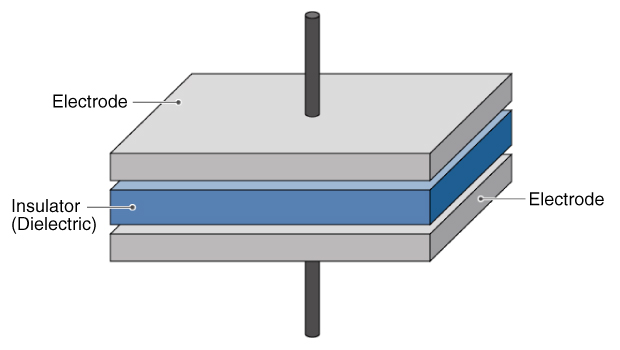
Capacitors of different shapes and sizes
Electrolytic Capacitor
Electrolytic capacitors usually use metal foil (aluminum/tantalum) as the positive electrode, and the insulating oxide layer of the metal foil (aluminum oxide/tantalum pentoxide) as the dielectric. Electrolytic capacitors are divided into aluminum electrolytic capacitors and tantalum electrolytic capacitors based on their positive electrodes. capacitor. The negative electrode of aluminum electrolytic capacitors consists of a thin paper/film or electrolytic polymer soaked in an electrolyte solution (liquid electrolyte); the negative electrode of tantalum electrolytic capacitors is usually manganese dioxide. Since the electrolyte is used as the negative electrode (note that it is distinguished from the dielectric), the electrolytic capacitor gets its name.
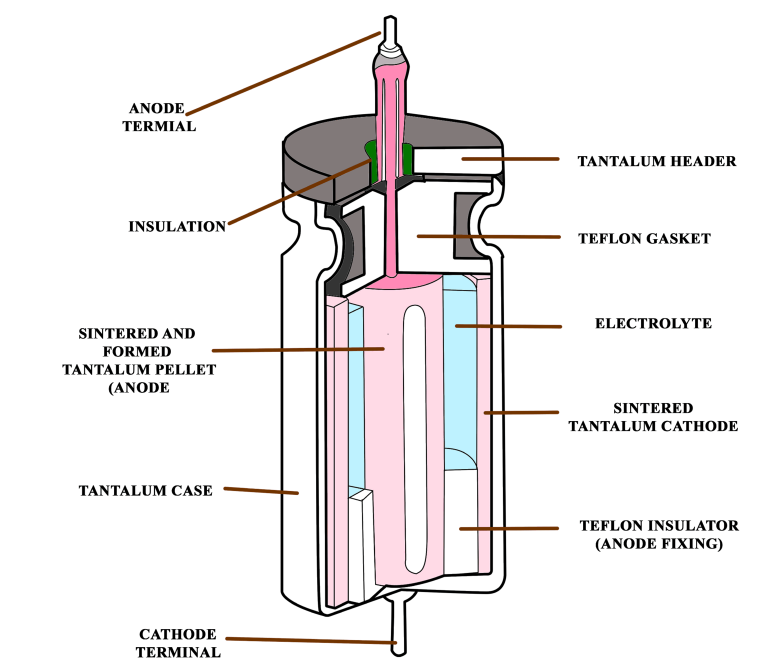
Detailed diagram of the internal structure of an electrolytic capacitor
Electrolytic capacitor symbol
The symbol for an electrolytic capacitor is often represented in circuit diagrams as a simple rectangle with a curved line on one side. The curved line indicates the polarity of the capacitor, with the longer line representing the positive (+) terminal and the shorter line representing the negative (-) terminal. This symbol helps engineers and technicians identify the orientation and connections of electrolytic capacitors in electronic circuits.

Three different electrolytic capacitor symbols

Bipolar electrolytic capacitor
Electrolytic capacitors featuring a non-solid electrolyte exhibit a distinctive polarity indicator on their cathode (negative) end, often associated with the lead that is comparatively shorter. Conversely, electrolytic capacitors endowed with a solid electrolyte showcase a polarity marking on their anode (positive) side. It's noteworthy, however, that this rule does not apply to cylindrical LEDs with a single-ended configuration and surface mount device (SMD) polymer capacitors.
Electrolytic capacitor characteristic structure analysis
Electrolytic capacitor is a kind of capacitor, which can be divided into two types: non-polar and polar. The metal foil is the positive electrode (aluminum or tantalum), and the oxide film (aluminum oxide or tantalum pentoxide) that is close to the metal with the positive electrode is the dielectric , the cathode is composed of a conductive material, an electrolyte (the electrolyte can be liquid or solid) and other materials. Because the electrolyte is the main part of the cathode, the electrolytic capacitor gets its name. At the same time, the positive and negative of the electrolytic capacitor cannot be connected incorrectly.
1. Electrolytic capacitor structure
Aluminum electrolytic capacitor is a polarized capacitor. Its positive plate is made of aluminum foil, which is immersed in the electrolyte for anodic oxidation treatment. A layer of aluminum oxide film is formed on the surface of the aluminum foil, and its thickness is generally 0.02 - 0.03μm . This layer of oxide film is the insulating medium between the positive and negative plates. The negative electrode of the capacitor is composed of electrolyte, and the electrolyte is generally composed of boric acid, ammonia water, ethylene glycol, etc. In order to facilitate the manufacture of capacitors, the electrolyte solution is usually impregnated on a special paper, and then a piece of original aluminum foil is pasted together with the paper soaked in the electrolyte solution, so that the negative electrode can be drawn out on the original aluminum foil strip more conveniently.
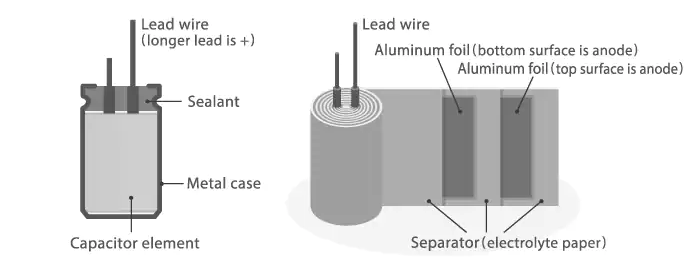
Electrolytic capacitor characteristic structure analysis diagram
As the picture shows. The core of the aluminum electrolytic capacitor is formed by winding the above-mentioned positive and negative electrodes according to their central axes, and then putting the core into an aluminum casing to package the aluminum electrolytic capacitor. In order to keep the electrolyte solution from leaking and drying up, a rubber plug is used to seal the mouth of the aluminum casing of the electrolytic capacitor package. In order to obtain a large capacitance and a small volume, chemical etching is used to form a rough surface on one side of the positive aluminum foil, so that the surface area of the electrode is increased, thereby increasing the capacitance. The reason why aluminum electrolytic capacitors have polarity is that the aluminum oxide film on the positive plate has unidirectional conductivity. Only when the positive pole of the capacitor is connected to the positive pole of the power supply, and the negative pole is connected to the negative pole of the power supply, the aluminum oxide film can function as an insulating medium. effect. If the polarity of the aluminum electrolytic capacitor is reversed, the aluminum oxide film will become a conductor, and the electrolytic capacitor will not only fail to function, but also cause overheating and damage the capacitor due to a large current passing through it. In order to prevent accidental explosion accidents when aluminum electrolytic capacitors are in use, generally the end face of the aluminum shell package is pressed with a groove-type mechanical weak link. Once the internal pressure of the electrolytic capacitor is too high, the groove of the weak link will crack for pressure relief. Explosion-proof.
Although aluminum electrolytic capacitors have polarity, if new methods are adopted in structure and process, non-polar electrolytic capacitors can also be made.  
2. Characteristics of electrolytic capacitors
Features of electrolytic capacitors 1: The capacitance per unit volume is very large, dozens to hundreds of times larger than other types of capacitance.  
The second characteristic of electrolytic capacitors: the rated capacity can be very large, and can easily be tens of thousands of μf or even several f (but not compared with the electric double layer capacitance).  
Feature 3 of electrolytic capacitors: The price has an overwhelming advantage over other types, because the components of electrolytic capacitors are made of common industrial materials, such as aluminum and so on. The equipment for manufacturing electrolytic capacitors is also common industrial equipment, which can be mass-produced and the cost is relatively low. Common Japanese electrolytic capacitors are represented by Nippon Chemi-con (Black King Kong) and Rubycon (ruby), Taiwan electrolytic capacitors are represented by LELON (Leon), CAPXON (Fengbin), and Hong Kong electrolytic capacitors are represented by SAMXON (Manyu ), KFSON (Kangfusong) as representatives , China is represented by TH (Huayu), Chang (Huawei), Xunda (Xunda), etc., Europe and the United States are represented by ELEBASIC, KENDEIL, EVERALPHA.
The main characteristic parameters of the capacitor
(1)Capacitor main characteristic parameters
1. Nominal capacitance
Capacitance marked on the capacitor. However, there is a deviation between the actual capacitance of the capacitor and the nominal capacitance, and there is a corresponding relationship between the accuracy level and the allowable error. Generally, capacitors are commonly used in grades I, II, and III, and electrolytic capacitors are used in grades IV, V, and VI, which are selected according to the application. The capacitance value of an electrolytic capacitor depends on the impedance presented when it works under AC voltage, and the capacitance value will change with the change of operating frequency, temperature, voltage and measurement method.   
2. Rated voltage  
The effective value of the highest DC voltage that can be continuously applied to the capacitor at the lowest ambient temperature and the rated ambient temperature. If the working voltage exceeds the withstand voltage of the capacitor, the capacitor will be broken down and damaged. In practice, as the temperature increases, the withstand voltage value will become lower.
3. Insulation resistance
The DC voltage is added to the capacitor to generate a leakage current, and the ratio between the two is called the insulation resistance. When the capacitance is small, it mainly depends on the surface state of the capacitor; when the capacitance is >0.1μF , it mainly depends on the medium. The higher the insulation resistance, the better.
4. loss
Under the action of an electric field, the energy consumed by heat in a unit time is called loss. The loss is related to the frequency range, dielectric, conductance, resistance of the metal part of the capacitor, etc.
5. Frequency characteristics
As the frequency increases, the capacitance of a general capacitor shows a decreasing trend. When the capacitor works below the resonant frequency, it behaves as capacitive, and when it exceeds its resonant frequency, it behaves as inductive, and at this time it is not a capacitor but an inductance. Therefore, it is necessary to avoid capacitors operating above the resonant frequency.   
(2)Several parameters commonly used in capacitor selection
1.Temperature coefficient, that is, the range in which the capacitance value changes with temperature.   
2.Dissipation factor, because of the capacitor’s leakage resistance, equivalent series resistance and equivalent series inductance, these three indicators are almost always difficult to separate, so many capacitor manufacturers combine them into one indicator, called loss factor, mainly used to describe the ineffectiveness of the capacitor. Dissipation factor is defined as the ratio of the energy dissipated to the energy stored in a capacitor per cycle. Also known as loss tangent.   
3.Q value, also known as quality factor, is the reciprocal of loss factor. Generally, the Q or loss factor will be marked in the manual of the capacitor.
4.Dielectric constant K, the difference in capacitance is mainly due to the difference in filling medium, the size of the dielectric constant is related to the volume of the capacitor and the absorption of the medium, the dielectric constant is large, and a large capacity can be integrated in a small volume, but Medium absorption is very serious.
Types of electrolytic capacitors
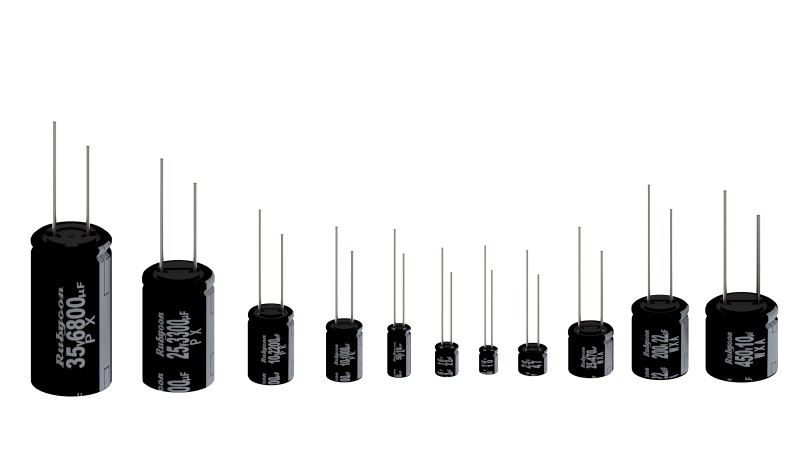
Capacitors of different shapes and sizes
According to analysis and statistics, the packaging types of electrolytic capacitors are mainly divided into the following 10 categories:  
1. According to the structure, it can be divided into three categories:
fixed capacitors
variable capacitors
trimmer capacitors
2. Classified by electrolyte:
organic dielectric capacitors
inorganic dielectric capacitors
electrolytic capacitors
electric heating capacitors
air dielectric capacitors, etc
3. According to the application, there are:
high-frequency bypass
low-frequency bypass
filtering
tuning
high-frequency coupling
low-frequency coupling
small capacitors
4. According to different manufacturing materials, it can be divided into:
5. According to High-frequency bypass:
ceramic capacitors
mica capacitors
glass film capacitors
polyester capacitors
glass glaze capacitors
6. According to Low frequency bypass:
7. According to Filtering:
aluminum electrolytic capacitors
paper capacitors
composite paper capacitors
liquid tantalum capacitors
8.According to Tuning:
ceramic capacitors
mica capacitors
glass film capacitors
polystyrene capacitors
9. According to Low coupling:
paper dielectric capacitors
ceramic capacitors
aluminum electrolytic capacitors
polyester capacitors
solid tantalum capacitors
10.According to Small capacitors:
metallized paper capacitors
ceramic capacitors
aluminum electrolytic capacitors
polystyrene capacitors
solid tantalum capacitors
glass glaze capacitors
metallized polyester capacitors
polypropylene capacitors
mica capacitors
Precautions for using electrolytic capacitors
1. The actual voltage of the electrolytic capacitor in the circuit should not exceed its withstand voltage value. When using electrolytic capacitors, be careful not to reverse the positive and negative poles. In the power supply circuit, when outputting a positive voltage, the positive pole of the electrolytic capacitor should be connected to the output terminal of the power supply, and the negative pole should be grounded. When the output voltage is negative, the cathode is connected to the output terminal and the anode is grounded. Different circuits should use different types of capacitors.
Before installing the capacitor into the circuit, make sure that there is no short circuit, open circuit, leakage, etc., and check the capacitance value. When installing, it is convenient to check the capacitor's model, capacity, withstand voltage and other symbols for verification.
2. When the polarity of the filter capacitor in the power circuit is reversed, the filter effect of the capacitor is greatly reduced. On the one hand, it causes the output voltage of the power supply to fluctuate, and on the other hand, the electrolytic capacitor equivalent to the resistance is heated by the reverse current. When the reverse voltage exceeds a certain value, the reverse leakage resistance of the capacitor becomes very small, which will cause the capacitor to burst and be damaged due to overheating shortly after energization.
3. The voltage applied to both ends of the electrolytic capa+citor shall not exceed its allowable working voltage. In the design of the actual circuit, there should be an allowable voltage range according to the specific situation. When designing the filter capacitor of the regulated power supply, if the AC power supply voltage is 220V, the secondary rectification voltage of the transformer can reach up to 22V, and the electrolytic capacitor with a withstand voltage of 25V during PCB design can generally meet the requirements. However, if the AC power supply voltage fluctuates greatly Large, it may rise to more than 250V, it is best to choose an electrolytic capacitor that can withstand more than 30V.
4. The electrolytic capacitor should not be close to the high-power heating element in the circuit, so as to prevent the electrolyte from being heated and dried up quickly.
5. For filters with positive and negative polarity, two electrolytic capacitors of the same polarity can be connected in series to make a non-polar capacitor.
6. Capacitor case and auxiliary lead terminals must be completely isolated from the positive and negative poles and the circuit board.

Nantian Electronics a professional distributor of electronic components, providing a wide range of electronic products, saving you a lot of time, effort and cost through our meticulous order preparation and fast delivery service.
Share this post



FAQ
1. What is the use of electrolytic capacitors?
Electrolytic capacitors are generally used in DC power supply circuits because of their high capacitance and small size, which help reduce ripple voltage or for coupling and decoupling applications.
2. What is the difference between electrolytic capacitors and non-electrolytic capacitors?
An electrolytic capacitor is unipolar because its electrolyte is like a battery. A non-electrolyte is ambipolar because it consists of a dielectric material rather than an electrolyte.
3. How to identify electrolytic capacitors?
Many recent capacitors are marked with actual + and - symbols, which make it easy to determine the polarity of the capacitor. Another format for polarity marking of electrolytic capacitors is to use stripes on the components. On electrolytic capacitors, the stripe indicates the negative lead.
4. How does the electrolytic capacitor fail?
There are many reasons for the failure of electrolytic capacitors, such as high temperature during soldering, internal power dissipation caused by ripple, etc., high ambient temperature, reverse voltage, voltage transients, etc. High temperatures can cause hot spots inside the capacitor and cause it to fail.
5. What is the difference between electrolytic capacitors and ceramic capacitors?
Electrolytic capacitors are great for obtaining large capacitance values at low cost, but they have large ESR and ESL. Ceramic capacitors have very low ESR and ESL, which makes them ideal for transient performance, but they have limitations on capacitor size.
6. What are the main disadvantages of electrolytic capacitors?
Aside from the obvious explosion hazard, the main disadvantage of using aluminum electrolytic capacitors is the possibility of drying out. Essentially, when the capacitor is not in use, it starts to reduce the dielectric on the anode foil.
7. Can electrolytic capacitors be used in AC circuits?
Electrolytic capacitors are very similar to batteries in their response to voltage polarity. They should not be used with AC voltage.
8. How long can the electrolytic capacitor be used?
Today's aluminum electrolytic capacitors have a longer shelf life than their predecessors, typically around 2 years. For aluminum electrolytic capacitors, changes in ESR, capacitance, and leakage current are caused by chemical reactions between the aluminum oxide film and the electrolyte.
9. When to use ceramic capacitors or electrolytic capacitors?
Electrolytic capacitors are commonly used for voltage filtering in power supply applications, but are also frequently used in audio amplifiers. Ceramic capacitors are commonly used in radio frequency and some audio applications.
10. When should the electrolytic capacitor be replaced?
A good rule of thumb is to replace the electrolyte every five to seven years. Older electrolytes may not explode, but still cause operating squirrels or poor audio response.